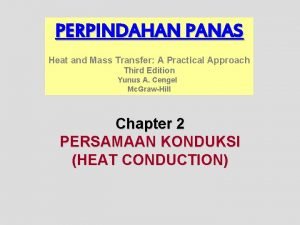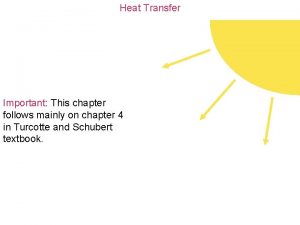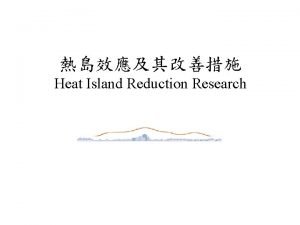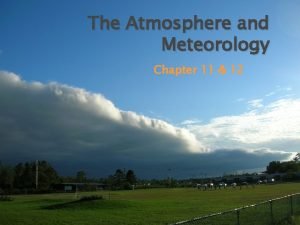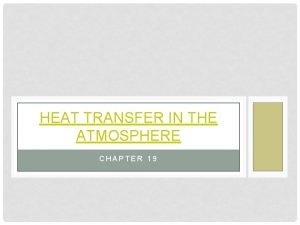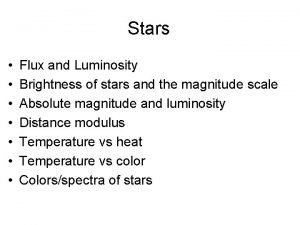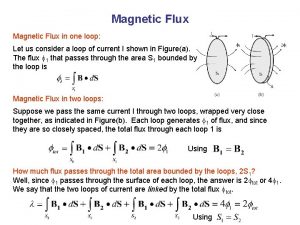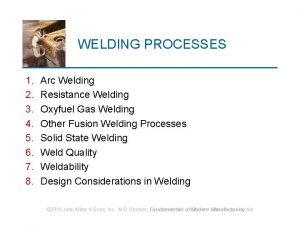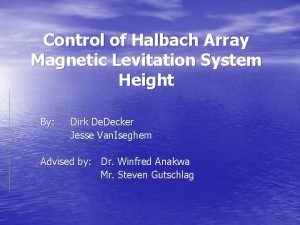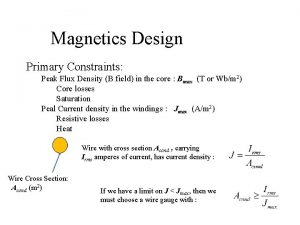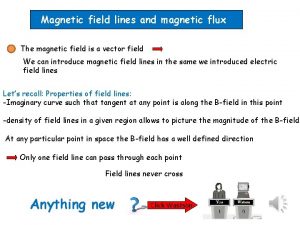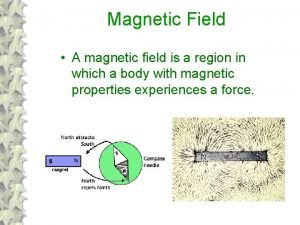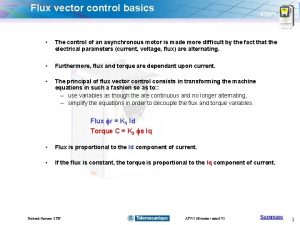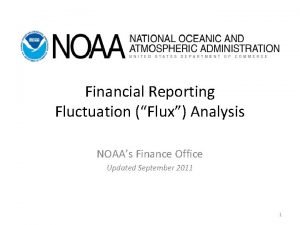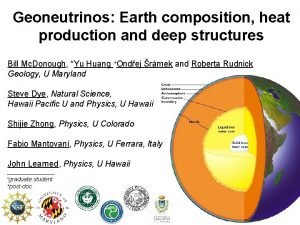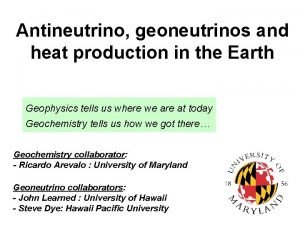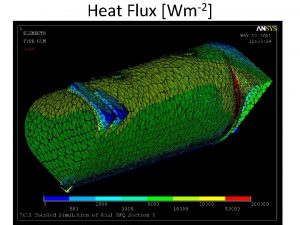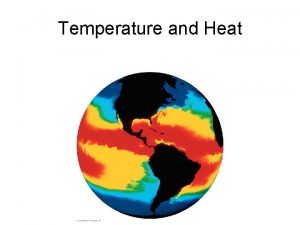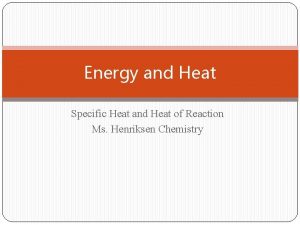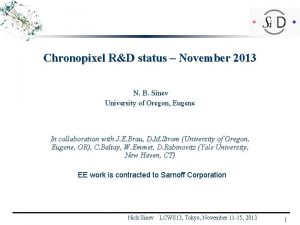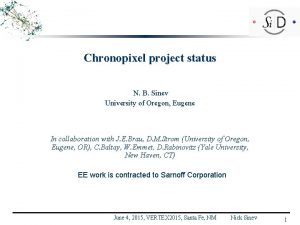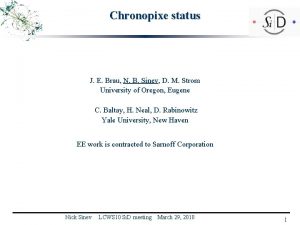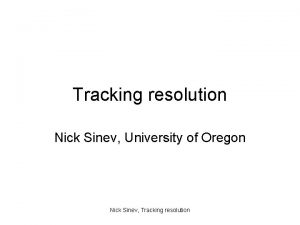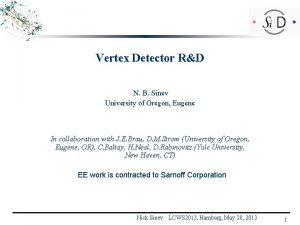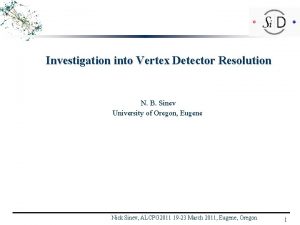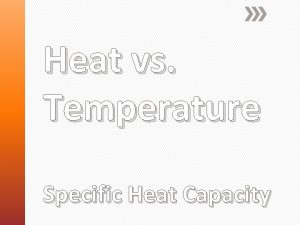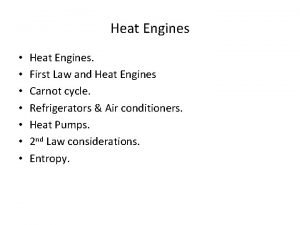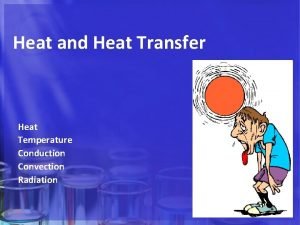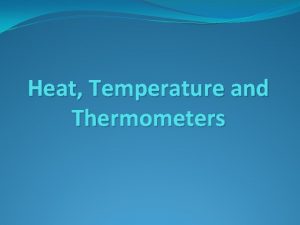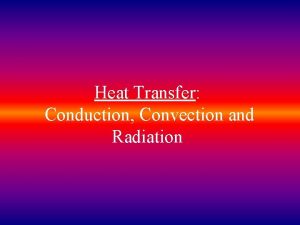GEONEUTRINOS AND EARTH HEAT FLUX V V Sinev

































- Slides: 33

GEONEUTRINOS AND EARTH HEAT FLUX V. V. Sinev (INR, Moscow) in collaboration with L. B. Bezrukov, A. S. Kurlovich, B. K. Lubsandorzhiev, A. K. Mezokh, V. P. Zavarzina (INR, Moscow) and V. P. Morgaluk (A. N. Nesmeyanov Institute of Organoelement Compounds of Russian Academy of Sciences, Moscow) ICPPA-2017 October, 2 -5, MEPh. I, Moscow

Plan of the talk � � � Introduction Modern knowledge on Earth heat flux (origin and transfer to the surface) Geoneutrinos (how do they connect to heat flux) Detectors (working and under construction) Conclusion 14. 06. 2021 ICPPA-2017 MEPh. I Moscow 2 /33

Introduction � � The origin of the Earth thermal flux is not understood completely. The value of the heat flux from Earth interior also could be revised. Modern Earth model regards radiogenic heat as about a half of total measured one. Registering of antineutrinos on the Earth surface can help to understand if the most part of the heat flux is due to radioactivity or not. Also there is possibility to analyze reservoirs of heat sources from radioactivity inside the Earth. 14. 06. 2021 ICPPA-2017 MEPh. I Moscow 3 /33

Primordial heat sources: � � Gravitational energy Short-lived isotopes decays, say, as 26 Al (7. 17× 105 y) or 234 U (2. 455× 105 y) etc. 14. 06. 2021 ICPPA-2017 MEPh. I Moscow 4 /33

14. 06. 2021 ICPPA-2017 MEPh. I Moscow From the talk by O. Smirnov at 5 /33 Nalchik Baksan-50

14. 06. 2021 ICPPA-2017 MEPh. I Moscow From the talk by O. Smirnov at Nalchik Baksan-50 6 /33

What is correct value? Measured value may be not complete. If there are other estimations of the Earth heat flux? 14. 06. 2021 ICPPA-2017 MEPh. I Moscow 7 /33

Modern value 47 TW Heat transfer ways Thermoconductivity, H(DT) 14. 06. 2021 H = H(DT) + H(DF) + H(Ch) Hot gases flows, H(DF) ICPPA-2017 MEPh. I Moscow Chemical potential, H(Ch) 8 /33

Summary of thermal Earth flux results Earth � Bore-hole temperature gradient 47± 2 TW � ARGO Earth’s energy imbalance 300± 76 TW Moon recalculated to Earth heat flux � Apollo 15, 17 drilling 43 -65 TW � Russian radio emission exp. 170 TW � LRO temperature map 420 TW We consider the value of 300 TW as the most 14. 06. 2021 9 /33 MEPh. I Moscow favorable to explain. ICPPA-2017 all experimental data.

300 ± 80 TW seems not so high There may be that nonconductive way of heat transfer by hot gases is the main process in transfer of inner Earth heat. The gases goes up through the narrow gaps and carries up the heat to the surface the chemical potential - potential energy that can be absorbed or released in chemical reactions. 14. 06. 2021 ICPPA-2017 MEPh. I Moscow 10 /33

Several examples illustrating statements done above. 14. 06. 2021 ICPPA-2017 MEPh. I Moscow 11 /33

Journal of Volcanology and Geothermal Research, 27 (1986) 371 --397 A MODEL FOR THE TRANSIENT TEMPERATURE EFFECTS OF HORIZONTAL FLUID FLOW IN GEOTHERMAL SYSTEMS J. P. ZIAGOS and D. D. BLACKWELL 14. 06. 2021 ICPPA-2017 MEPh. I Moscow 12 /33

The way of heat transfer in HE model: the gas carries up the chemical potential Silane - Si. H 4 - gas in temperature region: -112 to +450 °С Formation: Mg 2 Si + 4 H+ = 2 Mg 2+ + Si. H 4 ↑ - Q Decomposition: Si. H 4 + 2 H 2 O = Si. O 2 + 4 H 2 ↑ + Q � Si. H 4 slowly dissolves in water and the decomposition reaction goes slowly under normal conditions – 20% per day. 14. 06. 2021 ICPPA-2017 MEPh. I Moscow 13 /33

Nonconductive way of heat transfer by hot gases 14. 06. 2021 ICPPA-2017 MEPh. I Moscow 14 /33

Nonconductive way of heat transfer by hot gases 14. 06. 2021 ICPPA-2017 MEPh. I Moscow 15 /33

Do we see the contribution of this mechanism? Yes! 14. 06. 2021 ICPPA-2017 MEPh. I Moscow 16 /33

Results of temperature measurements in borehole Rukhoup (Stanop, North England) 14. 06. 2021 ICPPA-2017 MEPh. I Moscow 17 /33

Examples of characteristic inverted temperature-depth profiles from the Cascade Range in Oregon (Blackwell et al. , 1982) 14. 06. 2021 ICPPA-2017 MEPh. I Moscow 18 /33

Kola (Russia) Superdeep Borehole Deepest point: 12 262 meters. This is a record up to now. � Main problem: . The temperature is higher than it was expected 180° C instead of expected 100° C. A large quantity of hydrogen gas. The mud that flowed out of the hole was described as “boiling with hydrogen”. � 14. 06. 2021 ICPPA-2017 MEPh. I Moscow 19 /33

What are geoneutrinos and how they could help in understanding the Earth heat flux 14. 06. 2021 ICPPA-2017 MEPh. I Moscow 20 /33

14. 06. 2021 ICPPA-2017 MEPh. I Moscow From the talk by O. Smirnov at Nalchik Baksan-50 21 /33

14. 06. 2021 ICPPA-2017 MEPh. I Moscow From the talk by O. Smirnov at Nalchik Baksan-50 22 /33

14. 06. 2021 ICPPA-2017 From the talk by O. Smirnov at 23 /33 MEPh. I Moscow Nalchik Baksan-50

Borexino M. Agostini et al. Phys. Rev. D 92, 031101 (2015). Tmeas = 2056 days (5. 6 years) Np = (0. 977± 0. 05)× 1031 protons on target Exposure (5. 5± 0. 3) × 1031 proton years 23. 7 +6. 5(st)+0. 8 -5. 7(st)-0. 6 geo-nu events 43. 5 TNU 14. 06. 2021 ICPPA-2017 MEPh. I Moscow 24 /33

Kam. LAND A. Gando et al. Phys. Rev. D 88, 033001 (2013). Tmeas = 2991 days (8. 2 years) Np = (5. 98± 0. 13)× 1031 protons on target Exposure (4. 9± 0. 1) × 1032 proton years 116 +28 -27 geo-nu events 23. 67 TNU 14. 06. 2021 ICPPA-2017 MEPh. I Moscow 25 /33

Hydridic Earth (HE) model ( primordially Hydrogen-Rich Planet) was born 40 years ago and does not killed up to now Basic idea: Planet chemical composition depends on distance from the Sun. Earth chemical composition ≠ Asteroid Belt (AB) chemical composition. � 14. 06. 2021 ICPPA-2017 MEPh. I Moscow 26 /33

Hydridic Earth (HE) There are U, Th, K in Lower mantle and Core � Mantle → metallic � Core → Fe. H 10 + Mg. H 10 + Na. H 10 + … � Percentage of K in Earth mass is 2 %– 4 % � The calculated radiogenic heat can be up to 650 TW. 40 K decay can give the main contribution in Earth heat flux. Leonid Bezrukov. Geoneutrino and Hydridic Earth model. Preprint INR � 1378/2014. ar. Xiv: 1308. 4163 � HE model predicts that Earth heat flux is not stationary. 14. 06. 2021 ICPPA-2017 MEPh. I Moscow 27 /33

Bezrukov-Sinev Model � � � M(U) = 1. 7× 1017 kg, M(Th) = 6. 7× 1017 kg In the Crust they distributed according BSE (Reference Model) In the Mantle and Core they were chosen in abundances not to break observed counting rates (Borexino and Kam. LAND) Experimental Calculated counting rate, TNU 14. 06. 2021 Borexino 43. 5 ± 12. 5 38. 1 Kam. LAND 23. 67 ± 5. 61 31. 8 ICPPA-2017 MEPh. I Moscow 28 /33

Looking for antineutrino flux from 40 K with large liquid scintillator detector V. V. Sinev, L. B. Bezrukov (Moscow, INR), E. A. Litvinovich, I. N. Machulin, M. D. Skorokhvatov (Kurchatov Inst. , Moscow & Moscow Phys. Eng. Inst. ), S. V. Sukhotin (Kurchatov Inst. , Moscow). Conference: C 14 -01 -26 Proceedings, Valday, May 13, 2014. 4 pp. e-Print: ar. Xiv: 1405. 3140 [physics. ins-det] Published in Phys. Part. Nucl. 46 (2015) 2, 186 -189 14. 06. 2021 ICPPA-2017 MEPh. I Moscow 29 /33

Recoil electrons spectrum from 40 К in BOREXINO e + e 14. 06. 2021 ICPPA-2017 MEPh. I Moscow 30 /33

EPJ Web of Conference 125, 02004(2016) QUARKS-2016 DOI: 10. 1051/epjconf/201612592004 On geoneutrino. L. B. Bezrukov, A. S. Kurlovich, B. K. Lubsandorzhiev, V. P. Morgalyuk, V. V. Sinev and V. P. Zavarzina We demonstrated that Borexino and Kam. LAND geoneutrino results and 300 TW of thermal Earth flux can be understood noncontradictory in the frame Hydridic Earth model. 14. 06. 2021 ICPPA-2017 MEPh. I Moscow 31 /33

Conclusion 1. 2. 3. 4. 5. Used value (47 TW) of Earth heat flux is low limit Nondirect measurements demonstrate higher value of heat flux Explanation of Earth heat flux may be done by geoneutrinos measurement: to explore how much is the Earth radioactivity, where radioactive nuclei are accumulated etc. Large neutrino detector should be constructed to have available statistics in appropriate time 40 K neutrinos registration will give an answer on the heat flux value 14. 06. 2021 ICPPA-2017 MEPh. I Moscow 32 /33

Nonconductive way of heat transfer by hot gases is the main process Thank you for attention 14. 06. 2021 ICPPA-2017 MEPh. I Moscow 33/33
 The coercive force in a ferromagnetic material is
The coercive force in a ferromagnetic material is Flux weber
Flux weber Heat flux adalah
Heat flux adalah Heat transfer
Heat transfer Ground heat flux definition
Ground heat flux definition Specific latent heat of a substance
Specific latent heat of a substance Imbalances in earth’s heat energy help to create weather.
Imbalances in earth’s heat energy help to create weather. High and low albedo
High and low albedo Heat transfer on earth
Heat transfer on earth Produced from the heat inside the earth
Produced from the heat inside the earth Heat flowing out of earth as it cools
Heat flowing out of earth as it cools Fill the chart below
Fill the chart below Specific heat capacity graph
Specific heat capacity graph Example of dry heat cooking
Example of dry heat cooking Luminosity and temperature equation
Luminosity and temperature equation Magnetic flux and inductance
Magnetic flux and inductance Fcaw electrode classification
Fcaw electrode classification Electrogas welding advantages and disadvantages
Electrogas welding advantages and disadvantages Halbach array levitation
Halbach array levitation Mizar luminosity
Mizar luminosity The flux method of labor turnover denotes:
The flux method of labor turnover denotes: Flux de données clients
Flux de données clients Peak flux density
Peak flux density Flux of a vector field
Flux of a vector field Simple dc motor
Simple dc motor Boucle kanban
Boucle kanban Induced voltage formula
Induced voltage formula Ce este fluxul informational
Ce este fluxul informational Superior 71 flux
Superior 71 flux Numerical flux
Numerical flux Fcaw welding definition
Fcaw welding definition Fiziologia respiratiei
Fiziologia respiratiei Fluctuation analysis accounting
Fluctuation analysis accounting Ct helicoidal
Ct helicoidal


